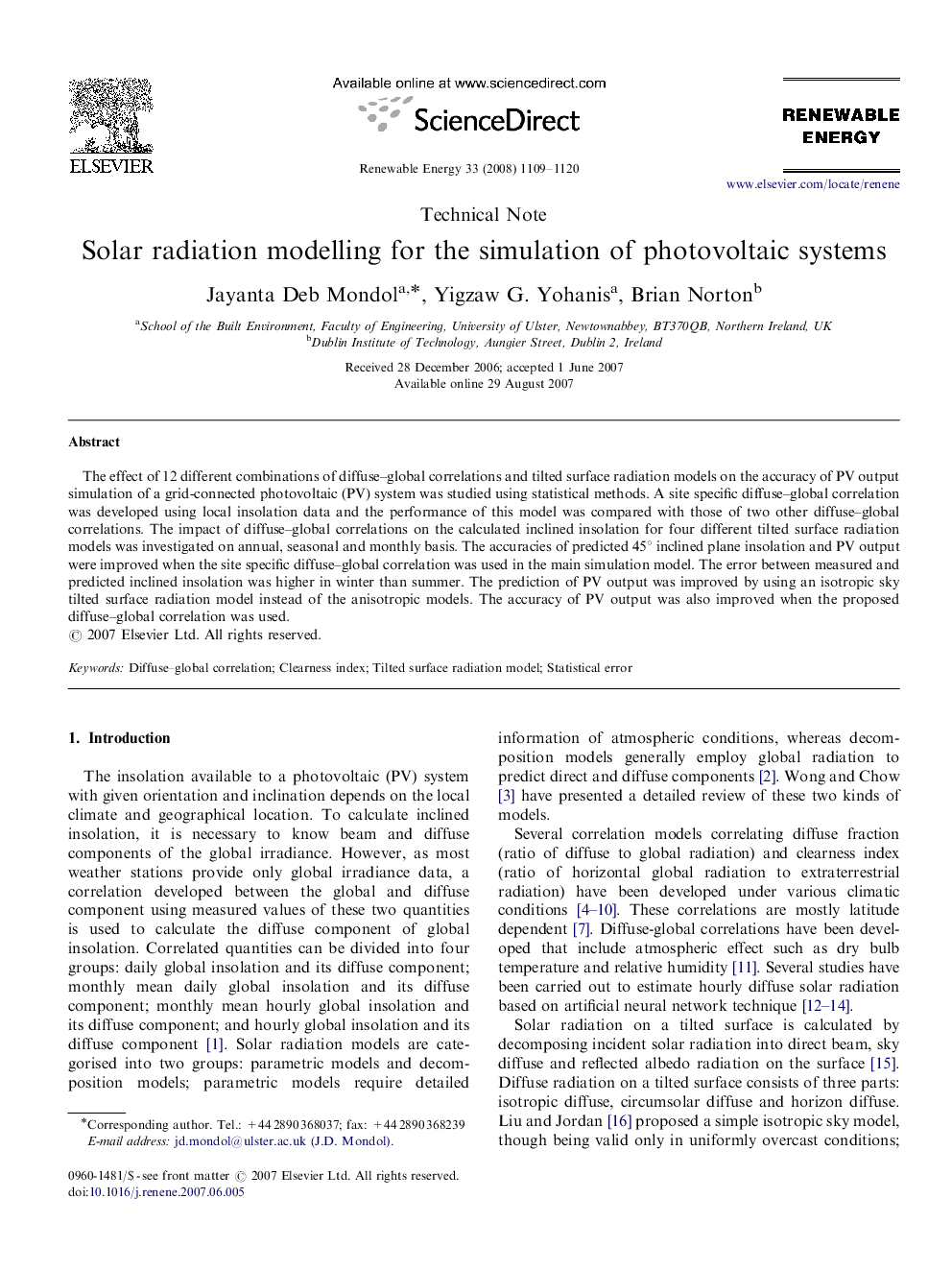| Article ID | Journal | Published Year | Pages | File Type |
|---|---|---|---|---|
| 302538 | Renewable Energy | 2008 | 12 Pages |
The effect of 12 different combinations of diffuse–global correlations and tilted surface radiation models on the accuracy of PV output simulation of a grid-connected photovoltaic (PV) system was studied using statistical methods. A site specific diffuse–global correlation was developed using local insolation data and the performance of this model was compared with those of two other diffuse–global correlations. The impact of diffuse–global correlations on the calculated inclined insolation for four different tilted surface radiation models was investigated on annual, seasonal and monthly basis. The accuracies of predicted 45° inclined plane insolation and PV output were improved when the site specific diffuse–global correlation was used in the main simulation model. The error between measured and predicted inclined insolation was higher in winter than summer. The prediction of PV output was improved by using an isotropic sky tilted surface radiation model instead of the anisotropic models. The accuracy of PV output was also improved when the proposed diffuse–global correlation was used.
